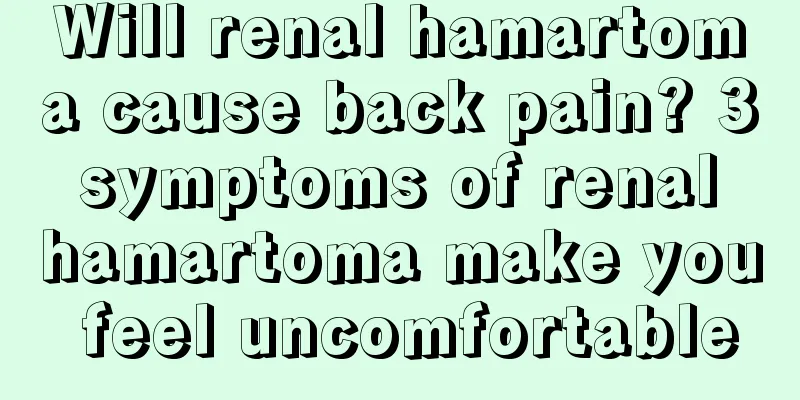Is ovarian teratoma serious?

|
Is teratoma serious? Many patients do not know much about teratoma. The name sounds scary, but in fact, teratoma is not a difficult disease. It is a benign gynecological tumor. In clinical treatment, teratoma is generally treated surgically. The following editor will give you a comprehensive understanding. 1. What is ovarian teratoma? Ovarian teratoma is a common type of ovarian germ cell tumor. It is not developed after a woman becomes pregnant with a freak baby, but is derived from the abnormal proliferation of germ cells. It is a tumor that grows in the ovary and is formed by the abnormal proliferation and aggregation of germ cells. Because germ cells contain three types of tissue components of the human body, namely, ectoderm, mesoderm, and endoderm, the tumor will contain ectoderm tissues such as hair, oil, skin, teeth, and bone fragments, and may also contain mesoderm or endoderm tissues such as muscle, gastrointestinal, and thyroid tissues. There are several types of ovarian teratocarcinoma, including mature teratomas and immature teratomas. 97% of them are cystic mature teratomas, also called dermoid cysts. Most of them are benign tumors, and the surgical results are often very good! Immature teratomas are mostly malignant teratomas because the growing cells are immature and do not form mature tissues such as hair and teeth. They are often solid masses. This type of mass should be operated on more carefully to avoid breaking the tumor and causing the contents to flow into the abdominal cavity, causing recurrence. Chemotherapy is also required if necessary. Because B-ultrasound is non-traumatic to the body, and teratoma shows a variety of characteristic echoes on ultrasound: such as indistinguishable type, cystic type, dough sign, mass sign, comet sign, lipid-fluid stratification, etc., it is generally not difficult to make a diagnosis using ultrasound. However, there are still a few cases that are difficult to identify due to complex sonograms, and some are similar to the sonograms of other ovarian tumors, etc., which may lead to misdiagnosis or missed diagnosis during ultrasound examination. 2. Who are most likely to develop ovarian teratoma? Is it related to sexual life? When a girl quietly enters puberty, some of the primitive cells in the ovaries undergo abnormal differentiation under the action of reproductive endocrine, forming teratomas. Therefore, ovarian teratomas are more common in adolescent women, and adolescent patients account for about 60% to 90% of the incidence of ovarian teratomas. The occurrence of ovarian teratomas has nothing to do with whether or not you have sex. The tumor is caused by the tumor changes in the cells on the ovaries. 3. Why is ovarian teratoma prone to tumor pedicle torsion? Because the tissue components in the tumor are numerous and complex, with light fat and hair and heavy teeth and bones, the density of the tumor is uneven and the center of gravity is biased to one side. When the tumor grows to a medium size of an adult fist, if the patient suddenly changes his position or turns continuously in a certain direction, the tumor with the center of gravity biased to one side will continue to rotate due to inertia, causing the tumor pedicle to twist. At this time, the patient may experience sudden severe pain in one side of the lower abdomen, which is usually continuous and often accompanied by symptoms such as nausea and vomiting, and even shock. 4. Will ovarian teratoma surgery affect future fertility? When a teenage girl has her ovaries removed due to a tumor, both the patient and her parents will worry about the impact of ovarian removal on marriage and childbearing. In fact, this worry is unnecessary. Because every woman has two ovaries, even if one is removed due to illness, the other ovary can still perform the functions of both ovaries, enough to produce enough sex hormones to meet the needs of marriage and childbearing. In addition, in some cases, the tumor can be removed from the ovary, preserving the function of the ovary, so it generally does not affect fertility. 5. Where else can teratomas occur? Teratoma often occurs in the pelvic adnexal area, anterior and middle mediastinum and retroperitoneal space, and rarely in the skull, nasal cavity, bladder, adrenal glands and other parts. |
<<: Can Traditional Chinese Medicine prevent the recurrence of ovarian teratoma?
>>: New dietary goals for teratoma
Recommend
To prevent colorectal cancer, check it every few years
How often should you check to prevent colorectal ...
The treatment method for eyelid calculi is like this
Tarsal calculi, also known as eyelid calculi, are...
How do patients with fibroids choose suitable exercise methods
How do patients with fibroids choose suitable exe...
What are the hazards of nasopharyngeal cancer
Nowadays, more and more people are suffering from...
What are the effects and functions of titanium crystal?
The output of titanium crystal is very scarce. Ti...
Half of my body feels numb when I sleep
Often when we sleep, we like to sleep with our ar...
Traditional Chinese medicine recipes that can treat lymphoma
Lymphoma patients should not only pay attention t...
The correct way to wipe glasses
Nowadays, more and more people wear glasses, and ...
Where is the gallbladder located in the body
People often say: "Evil comes from the coura...
What method can be used to cure advanced lung cancer? Is thoracoscopic treatment of lung cancer better than open chest surgery?
With the accelerated pace of people's lives a...
Do thyroid nodules require surgical treatment?
Whether surgery is necessary for thyroid nodules ...
What is the effect of washing your face with milk
Washing your face with milk has a lot of benefits...
Men with poor sleep should beware of the three major causes of prostate cancer
Prostate cancer is a malignant tumor that occurs ...
How long can you live without early treatment of nasopharyngeal cancer
How long can you live without early treatment of ...
Edible fungi can cure all diseases
There are many kinds of edible fungi, most of whi...









